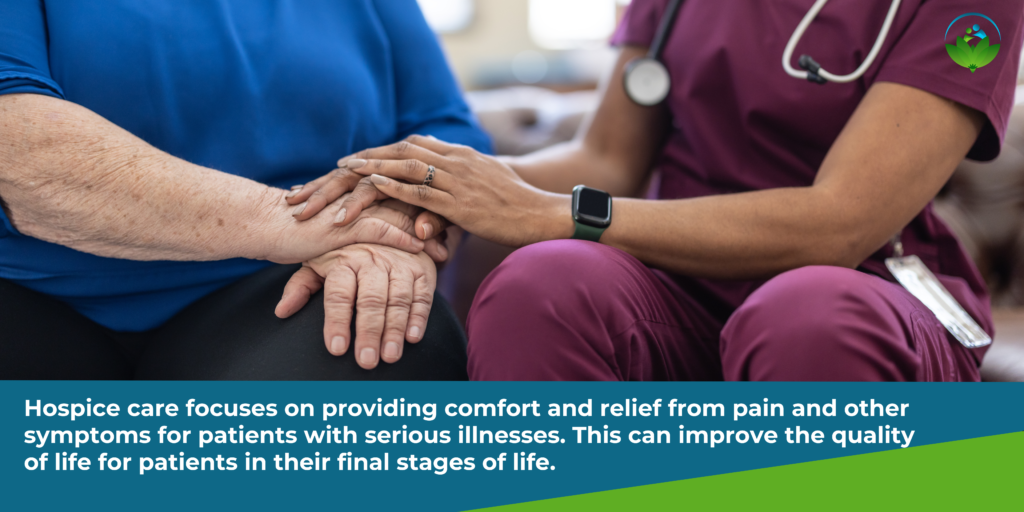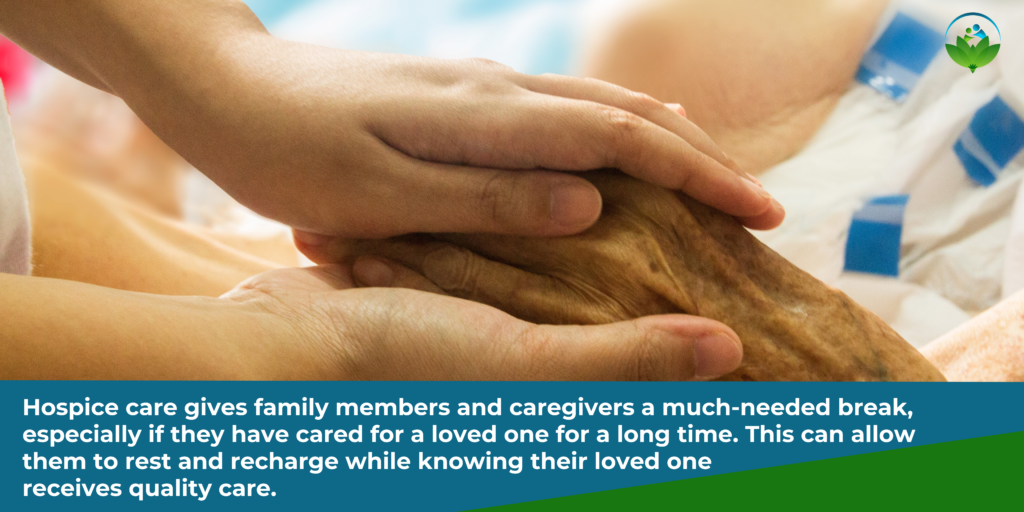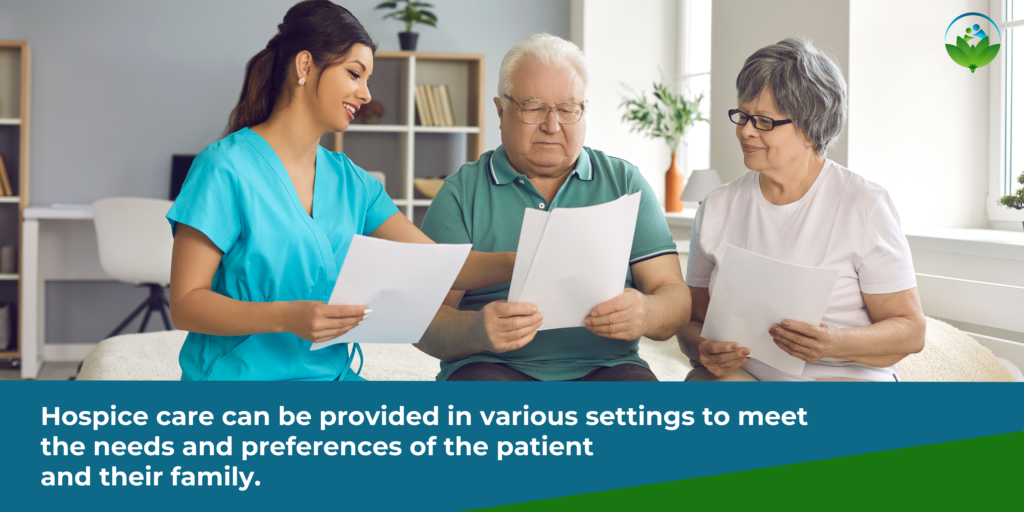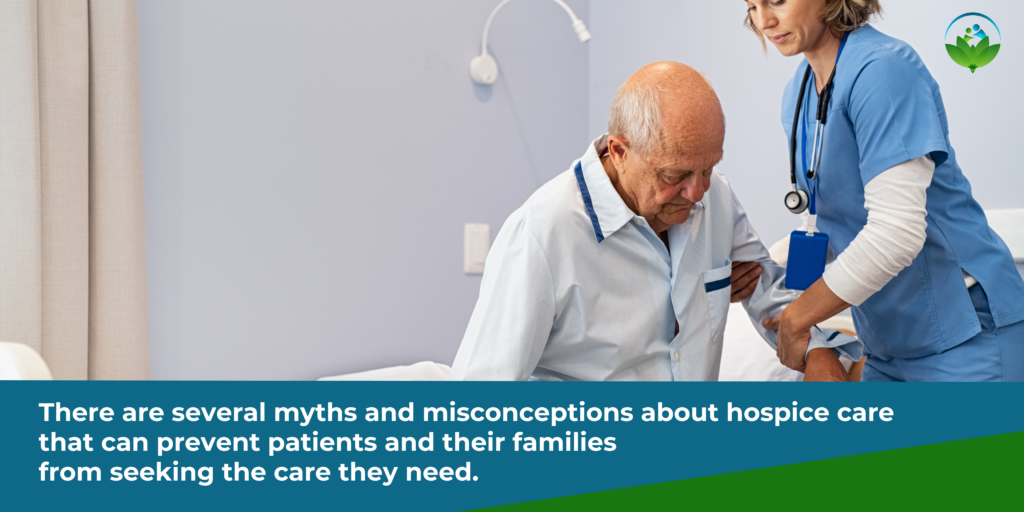Hospice care and palliative care are oftentimes interchanged, and although they are completely related, there are several noticeable differences.
People with terminal illnesses with a life expectancy of 6 months or less need hospice care. This type of care aims to provide patients with the highest possible quality of life during one of the most difficult times in their lives. It involves managing physical symptoms, providing emotional support, and addressing spiritual needs.
On the other hand, palliative care is a holistic approach to managing the signs and symptoms of serious illnesses, regardless of their stage or prognosis.
While hospice care is specifically for those with a limited life expectancy, palliative care can be provided anytime during a person’s illness.
The concept of hospice care dates back to the late 1800s, but it was in the 1960s that the modern hospice movement took shape. Hospice and palliative care have changed a lot over the years, both in how they are understood by many and how they are administered to patients. Because of these changes, many already recognize the importance of comprehensive care for people with terminal illnesses.
In this blog, we will talk about the hospice advantage, what it means for patients, family members, and caregivers, and what role palliative care plays in hospice.
We will also discuss the hospice care team, the available settings and options, and common myths and misconceptions about hospice care.
Finally, we will examine the financial advantages of choosing hospice care and guide you in finding the right hospice care provider.
The Hospice Advantage: Understanding Comprehensive Care

The advantage of hospice care is that it focuses not only on the patient’s physical needs but also on their emotional, social, and spiritual well-being. This is done by giving each person medical care, help with their symptoms, emotional support, and spiritual guidance that fits their needs and preferences.
One of the key principles of hospice care is that it is centered on the patient and their family. This means that care decisions are made based on the patient’s wishes, values, and beliefs. This ensures that the patient stays in charge of their care and is at the center of the decision-making process. This patient-centered approach also includes helping family members and other caregivers, who are seen as important members of the care team.
Also, hospice care focuses more on making the person feel better and relieving their symptoms than trying to cure the illness. This enables patients to live as fully and comfortably as possible during their remaining time in a familiar setting with their loved ones.
Benefits of Hospice Care for Patients

Hospice care has numerous patient benefits, including improved symptom management, enhanced quality of life, and increased patient satisfaction by providing the utmost care and support. By focusing on providing relief from pain, discomfort, and other distressing symptoms, hospice care enables patients to enjoy a better quality of life, even as their illness progresses.
One of the most significant benefits of hospice care is the sense of control it provides to patients. Hospice care gives patients the power to make decisions about their care and ensures their wishes and wants are respected. This helps them keep their dignity and independence while they are sick.
Also, hospice care often lets patients stay at home or in a comfortable place that feels like home, where they can be with their loved ones. This can have a big impact on the quality of life of the patient and give them a sense of familiarity and comfort during a difficult time.
Benefits of Hospice Care for Family Members and Caregivers

Hospice care benefits patients and provides valuable support to their family members and caregivers. By offering practical assistance, emotional support, and guidance on managing the patient’s symptoms, hospice care helps to alleviate some of the stress and burden associated with caregiving.
One of the key ways hospice care supports family members and caregivers is by providing respite care, which allows them to take a break from their caregiving duties and recharge their batteries. This can be particularly important for those providing round-the-clock care to their loved ones, as it enables them to maintain their well-being and avoid caregiver burnout.
Furthermore, hospice care can help family members and caregivers prepare for the end of their loved one’s life by offering counseling and support. This can enable them to understand their feelings and emotions and better cope with the grieving process after their loved one has passed away.
The Role of Palliative Care in Hospice

Palliative care is important in hospice because it focuses on managing the symptoms and side effects of serious illnesses like cancer, dementia, and others to improve the patient’s quality of life. Palliative care includes a wide range of services in hospice care, such as medical care, help with managing symptoms, emotional support, and spiritual guidance.
Palliative care is usually given by various experts in their fields, like doctors and nurses, social workers and other healthcare professionals, and chaplains, who work together to meet the patient’s unique needs. This team-based approach ensures that all parts of the patient’s care are coordinated and work together. This makes for a more holistic and person-centered experience.
Palliative care can also be given along with treatments to cure the illness. This way, patients can get full care that takes care of both their illness and its symptoms and side effects. This is especially beneficial for patients who are not yet hospice eligible but require assistance in managing their symptoms and helping them improve their quality of life.
Hospice care team: a multidisciplinary approach

The care team for hospice care comprises a diverse group of healthcare professionals who work together to provide excellent care to patients and their families. This multidisciplinary approach makes sure that all aspects of a patient’s care are taken into account, leading to a more unified and cohesive experience.
The core members of the hospice care team typically include:
- A medical director or physician who oversees the patient’s medical care and ensures that their symptoms are effectively managed.
- A hospice nurse who provides hands-on care and education to the patient and their family.
- A social worker who offers emotional support and practical assistance.
- A chaplain or spiritual counselor who addresses the patient’s spiritual needs.
In addition to these core team members, the hospice care team may include other healthcare professionals, such as therapists, pharmacists, and dietitians, who provide specialized services as needed.
Volunteers also play a crucial role in hospice care, offering companionship, respite care, and support to patients and their families.
Hospice care settings and options

Hospice care can be given in many different places, depending on the needs and wishes of the patients and their families. But the most typical location is the patient’s home, where they can receive care in a familiar and relaxing setting with their loved ones.
In addition to home-based hospice care, there are several other options. These include inpatient hospice facilities, which offer care around the clock in a dedicated setting; hospital-based hospice programs, which offer hospice care to patients who are already in the hospital for other reasons; and residential hospice facilities, which offer a home-like setting for patients who need more intensive care or support.
Each of these settings has its own unique advantages and drawbacks, and the choice of setting will depend on factors such as the patient’s medical needs, their personal preferences, and the availability of services in their area.
Myths and Misconceptions about hospice care

Even though hospice care has a lot of benefits, there are still a lot of myths and misunderstandings about it that can keep people from choosing it as a care plan. Some of the most common misconceptions include:
- Hospice care is only for those who are imminently dying: While hospice care is designed for individuals with a limited life expectancy, it can be provided for patients with a prognosis of six months or less, allowing them to receive comprehensive care and support during their remaining time.
- Hospice care means giving up hope: Making the decision to receive hospice care does not imply giving up hope; rather, it means putting more of an emphasis on enhancing the patient’s quality of life and making their remaining time as comfortable and meaningful as possible.
- Hospice care is only for cancer patients: People with a wide range of terminal illnesses, such as dementia, lung disease, heart disease, and many more, can access hospice care.
Hospice care is expensive: In fact, it frequently costs less than conventional medical care because it puts more emphasis on symptom management and comfort than it does on expensive procedures and treatments. A lot of patients can access hospice care because it is covered by Medicare, Medicaid, and the majority of private insurance plans.
Financial advantages of choosing hospice care

There are several financial advantages to choosing hospice care. There are programs that typically cover the cost of hospice care, including medical care, nursing care, medications, medical equipment, and supplies, as well as counseling and support services for patients and their families.
Patients can avoid the high costs associated with traditional medical care by choosing hospice care, which often involves expensive treatments, hospitalizations, and interventions.
On the other hand, hospice care focuses on providing comfort and symptom management, which can be more cost-effective and better aligned with the patient’s goals and preferences.
Also, hospice care can help patients and their families by assisting with insurance and billing issues, offering guidance on financial planning, and, if necessary, assisting people in finding other resources.
Finding the right hospice care provider

To take advantage of the hospice advantage and guarantee the patient receives the best care possible during this trying time, picking the right hospice care provider is essential.
When looking for a hospice care provider, consider the provider’s reputation, the quality of their services, and the compatibility of their care philosophy with the patient’s needs and preferences.
Here are some useful tips for finding the right hospice care provider, including:
- Seek recommendations: Ask for recommendations from healthcare professionals, friends, family members, or support groups who have experienced hospice care.
- Research online: Use online resources to research hospice care providers in the area, take the time to read reviews, and then compare their services and credentials. This will be an ideal way to get to know a hospice care provider.
- Interview potential providers: Schedule an appointment or a consultation to meet with representatives from potential hospice care providers, and ask questions about their services, care philosophy, and staff qualifications. This is the best way to get all the information needed.
- Verify coverage: Confirm that the hospice care provider is covered by the patient’s insurance plan, and inquire about additional out-of-pocket costs.
Final Thoughts
Embracing the hospice advantage means recognizing the numerous benefits this care can offer patients, family members, and caregivers.
By providing a holistic, patient-centered approach to care, hospice care can help improve the quality of life for those facing life-limiting illnesses while alleviating the emotional, physical, and financial burdens associated with traditional medical care.
To fully embrace the hospice advantage, one must educate oneself about the various aspects of hospice care, including the role of palliative care, the multidisciplinary care team, the available settings and options, and the common myths and misconceptions.
Armed with this knowledge, individuals can make informed decisions about their care and ensure that they receive the best possible support during their remaining time.


